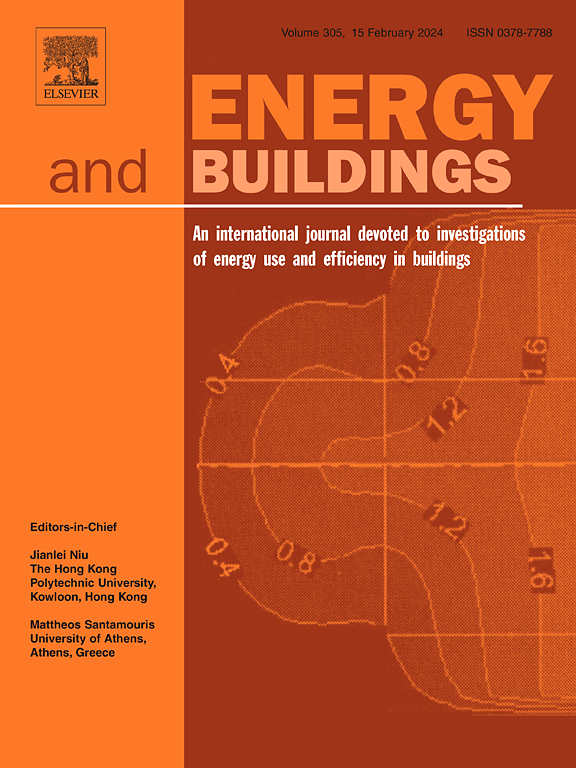建筑-电网交互信号对集群层面能源灵活性的影响:来自两个案例研究的见解
IF 7.1
2区 工程技术
Q1 CONSTRUCTION & BUILDING TECHNOLOGY
引用次数: 0
摘要
由于可再生能源的电力供应时变,可预测性有限,因此可再生能源日益融入电网,这给运营带来了挑战。建筑物-电网相互作用(BGI)信号已成为提高能源灵活性的一种策略,但其对配电变压器性能和老化的影响仍未得到充分研究。本研究使用一个联合仿真框架,将建筑性能仿真工具与数值计算方法相结合,研究了德国和瑞士两个节能建筑集群中单个与顺序BGI信号的作用。将单个BGI信号(如电价和二氧化碳当量强度)与序列BGI信号(包含变压器临界状态信号以动态调整灵活性响应)进行比较。结果表明,两个簇对变压器老化和电网应力的影响是明显的。在德国的建筑集群中,连续的BGI信号有效地减轻了需求驱动的变压器应力,与影响峰值负荷的单信号情况相比,减少了老化。相反,在瑞士的建筑集群中,光伏发电是主要的老化因素。在这里,单个BGI信号通过提高自耗来略微降低老化,而变压器临界状态信号在过载事件中偶尔会通过降低自耗来增加老化。在这两个集群中,对能源和成本节约进行了分析,建筑-电网交互信号集成成功地保持了热舒适的界限。这些发现为能源灵活性集成商提供了关于灵活建筑运营中电网稳定性、经济效率和减排之间潜在权衡的见解。本文章由计算机程序翻译,如有差异,请以英文原文为准。
Impact of Building-Grid interaction signals on energy flexibility at cluster Level: Insights from two case studies
The increasing integration of renewable energy sources into power grids introduces operational challenges due to their time-varying electricity supply and limited predictability. Building-grid interaction (BGI) signals have emerged as a strategy to enhance energy flexibility, yet their impact on distribution transformer performance and aging remains underexplored. This study investigates the role of single vs. sequential BGI signals in two energy-efficient building clusters in Germany and Switzerland, using a co-simulation framework that integrates building performance simulation tools with numerical computing methods. Single BGI signals, such as electricity price and CO2eq intensity, were compared to sequential BGI signals, which incorporate a transformer critical status signal to dynamically adjust flexibility responses. The results reveal distinct impacts on transformer aging and grid stress between the two clusters. In the German building cluster, sequential BGI signals effectively mitigated demand-driven transformer stress, reducing aging compared to single-signal cases, which impacted peak loads. Conversely, in the Swiss building cluster, photovoltaic feed-in was the dominant aging factor. Here, single BGI signals slightly lowered aging through improved self-consumption, while transformer critical status signals occasionally increased aging by reducing self-consumption during overload events. Across both clusters, energy and cost savings were analysed, with building-grid interaction signal integration successfully maintaining thermal comfort boundaries. These findings provide insights for energy flexibility aggregators on the potential trade-offs between grid stability, economic efficiency, and emission reductions in flexible building operations.
求助全文
通过发布文献求助,成功后即可免费获取论文全文。
去求助
来源期刊

Energy and Buildings
工程技术-工程:土木
CiteScore
12.70
自引率
11.90%
发文量
863
审稿时长
38 days
期刊介绍:
An international journal devoted to investigations of energy use and efficiency in buildings
Energy and Buildings is an international journal publishing articles with explicit links to energy use in buildings. The aim is to present new research results, and new proven practice aimed at reducing the energy needs of a building and improving indoor environment quality.
 求助内容:
求助内容: 应助结果提醒方式:
应助结果提醒方式:


